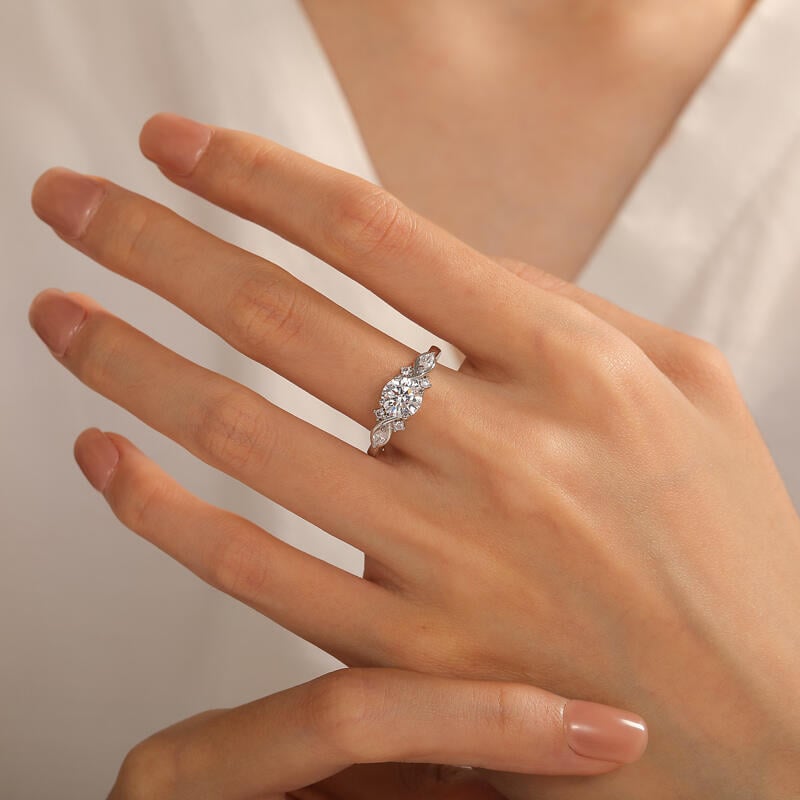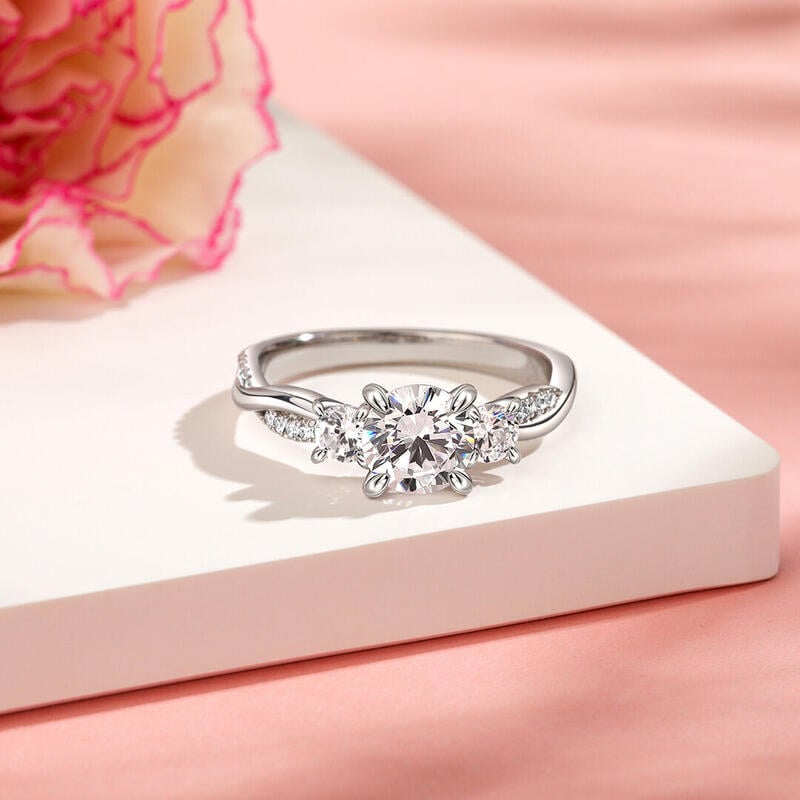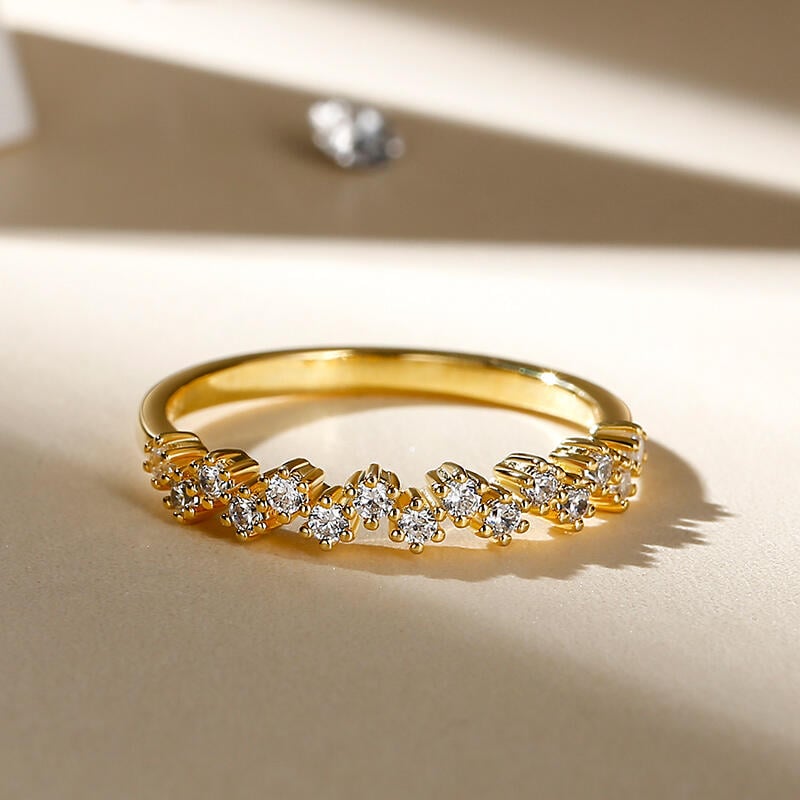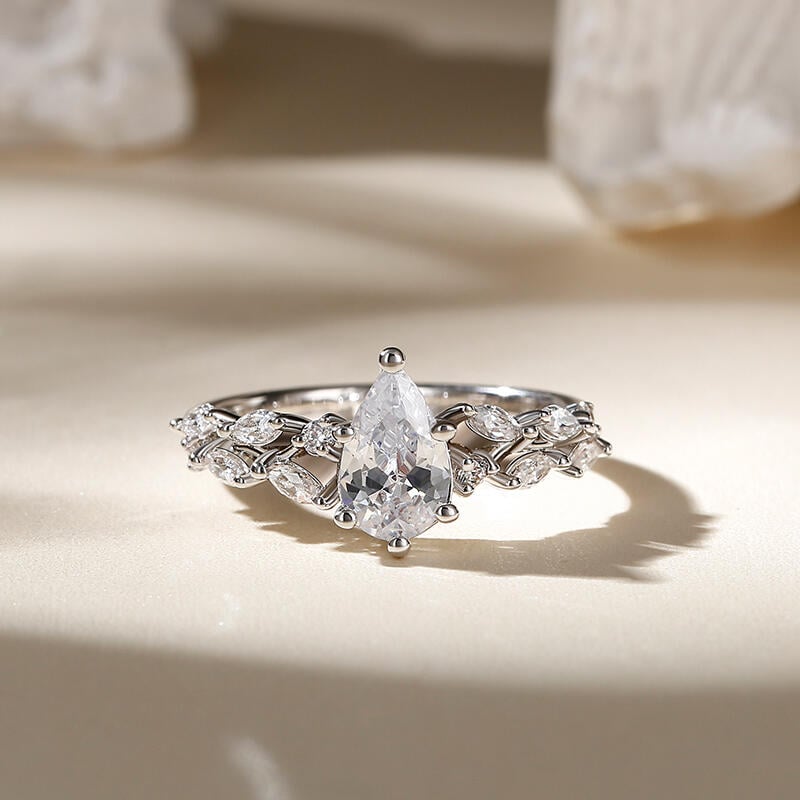The traditional April birthstone is the Diamond – a stone symbolizes strength, brilliance, and eternal clarity. Yet its appeal goes beyond mere sparkle, rooted in a deep and fascinating legacy. Whether you’re an April baby, shopping for a gift, or simply curious about the world’s most famous gem, let’s delve into the features, history, and meaning of this captivating stone, plus discover some stunning alternatives.
Navigate to:
History of April Birthstone Diamond
The story of the diamond is fascinating. For thousands of years, diamonds were found only in India. People back then People back then didn’t value them for their sparkle, but for their perceived power. The ancient Greeks named it ‘adamas’ (invincible) for its hardness, believing it warded off evil and healed sickness. Everything changed in the late 1800s when huge diamond mines were found in South Africa. So many diamonds were suddenly available that they were no longer seen as rare and precious. To solve this, the De Beers company launched a brilliant marketing campaign in 1947 with the slogan, “A Diamond is Forever.” This single idea successfully connected the diamond to the concept of eternal love, transforming it into the ultimate symbol of commitment and making it the most popular choice for engagement rings worldwide.

Features & Meaning of April Birthstone Diamond
The diamond is the hardest naturally occurring substance on Earth, scoring a perfect 10 on the Mohs scale of hardness. This inherent durability is what translates into its powerful symbolism.
The Features: Understanding the 4 Cs
When gemologists evaluate a diamond, they look at four key criteria:
- Cut: This is arguably the most important C, as it determines the stone’s brilliance and fire. A well-cut diamond reflects light optimally.
- Color: Diamonds are graded on a color scale from D (colorless) to Z (light yellow or brown). Colorless stones are the most rare and valuable.
- Clarity: This measures the presence of natural inclusions (internal flaws) and blemishes (external flaws). Fewer flaws mean higher clarity.
- Carat: This refers simply to the weight of the stone (one carat equals 200 milligrams).
The Meaning: Strength, Purity, and Clarity
The symbolism of the diamond perfectly mirrors the vibrant energy of April:
- Invincibility and Strength: Due to its unmatched hardness, the diamond has long been considered a stone of protection and fortitude. It was believed to impart courage and fearlessness to the wearer. For the April-born, it represents the ability to overcome challenges and maintain inner strength.
- Eternal Love and Commitment: The meaning most recognized today, the diamond symbolizes unbreakable bonds and fidelity. Because it is forever resistant to decay and wear, it represents a love that is equally enduring. When given as a gift, it speaks volumes about commitment and loyalty.
- Clarity and Purity: Diamonds, especially those that are highly colorless and flawless, symbolize crystal-clear vision, purity of heart, and innocence. Wearing a diamond birthstone is thought to enhance inner clarity and guide the wearer toward focused goals.
- Abundance: Historically, diamonds have always been connected to power, wealth, and status. While this is the most materialistic meaning, it speaks to the stone’s ability to attract abundance and success into the wearer’s life.
Stunning Alternatives for April Birthstone Diamond
While the diamond holds undeniable historical and emotional gravitas, modern consumers often seek alternatives due to ethical concerns about sourcing (blood diamonds), environmental impact, or simply the high cost. Fortunately, the market now offers brilliant, durable, and affordable substitutes that deliver the same show-stopping sparkle.



1. Lab-Grown Diamonds
Lab-grown diamonds are chemically, physically, and visually identical to mined diamonds. They are made in highly controlled environments that replicate the intense heat and pressure required to form diamonds deep within the Earth.
| Feature | Why It’s a Great Alternative |
|---|---|
| Composition | 100% carbon; score 10 on the Mohs scale. |
| Ethics & Cost | Guaranteed conflict-free, environmentally responsible (requires less energy than mining), and typically 30–50% less expensive than natural diamonds of comparable quality. |
2. Moissanite
Moissanite is a naturally occurring mineral (silicon carbide) that is extremely rare in its natural form, so almost all moissanite used in jewelry is lab-created. It is rapidly becoming the most popular diamond alternative due to its incredible brilliance.
| Feature | Why It’s a Great Alternative |
|---|---|
| Durability | Scores 9.25 on the Mohs scale (second only to diamond). |
| Brilliance | Moissanite has a higher refractive index and dispersion than a diamond, meaning it exhibits more “fire” (rainbow sparkle) when light hits it. |
| Cost | Significantly more affordable than both mined and lab-grown diamonds. |
3. White Sapphire
For those who prefer a natural gemstone but want to avoid the diamond’s price tag, the white sapphire is a beautiful choice. As a member of the corundum family (alongside ruby and blue sapphire), it is exceptionally durable.
| Feature | Why It’s a Great Alternative |
|---|---|
| Durability | Scores 9 on the Mohs scale, making it perfect for daily wear. |
| Appearance | White sapphire offers a softer, milky brilliance that is less fiery than a diamond, appealing to those who prefer understated elegance. |
| Meaning | Sapphires traditionally symbolize wisdom and clarity of thought. |
A Gem for Every April Soul
Whether you choose the unparalleled history and hardness of a genuine diamond, the responsible sparkle of a lab-grown stone, or the brilliant fire of moissanite, the April birthstone is a celebration of fortitude, clarity, and enduring strength.
More Jeulia Post:
The Difference of Natural and Lab Diamond?

